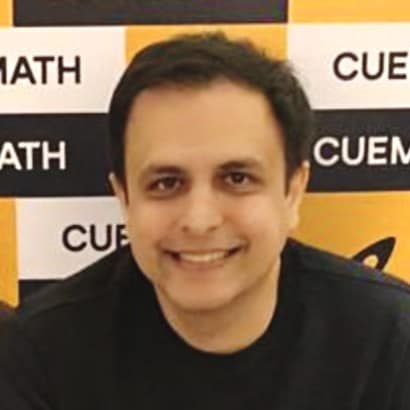AD | Featured
You probably think that teaching maths to your child is a challenge. As you read this, you’re probably wondering there are ways to simplify fractions, decimals, algebra, geometry, and other topics. After all, maths is a point of argument between you and your child. You think your child isn’t doing enough, and your kids feel that they’re being pressurised.
If you relate to this, then don’t fret. The trouble with maths is not the subject, but the way it is taught. Parents all over feel the same way you do, and some of these stories have been made into movies that you can watch with your child. So, the next family night, why not consider some of these movies about maths that may inspire both you and your children to look at learning in a different way. Ahead of international movie day, we give you some recommendations.
Cuemath International Movie Day recommendations

X+Y (12A – 2014)
This heart-warming British drama, inspired by the documentary Beautiful Young Minds, tells the story of an aspiring teen mathematics prodigy with autism called Nathan. Despite his difficulty understanding people, he feels completely at ease with numbers.
When chosen to represent the UK at the International Mathematical Olympiad, Nathan embarks on a journey in which he finds himself having to open his mathematically-focused mind to the nature of love and human relationships.
Whether your little ones are struggling or excelling in maths, the film ultimately carries a feel-good message that anyone can overcome their troubles and reach their goals, with a little perseverance and human connection.
Little Man Tate (PG – 1991)
Telling the story of 7-year-old Fred Tate, a maths prodigy whose remarkable abilities make it difficult for him to fit in among his peers, the film explores the difficulties of advancing education and living a “normal” life.
His single mother – despite facing several obstacles – is determined to ensure that he gets all the opportunities that he needs and that his genius abilities are fully realised.
When Fred joins a school for gifted children and meets one of his heroes, the brilliant but eccentric student “mathemagician” Damon Wells – a maths whiz who wears a black cape wherever he goes – it raises questions around the importance of not only being gifted but knowing how to use it.
This movie will not only pull on your heartstrings but is a lesson for us all to nurture our own gifts and natural abilities.




Jurassic Park (PG – 1993)
For those whose young ones are more interested in palaeontology than Pythagoras, Jurassic Park is the perfect compromise.
The film’s protagonist, Dr. Ian Malcolm is a mathematician who specialises in a branch of mathematics called “Chaos Theory”. Skilled at applying his mathematical theories in real-world situations, his understanding of chaos theory is a valuable skill in the field as well as the laboratory, as it encourages him to consider possible outcomes that others may not have considered.
Perhaps most important is the fact that being a mathematician is portrayed as something to be proud of, and rightly so. To quote Jeff Goldblum’s character directly:
“Ian Malcolm, how do you do? I do maths.”
The Man Who Knew Infinity (12A)
This film is inspired by the true story of Srinivasa Ramanujan, a gifted young Indian mathematician. With no formal maths education, and facing rejection from the academic community in India, Ramanujan writes to English mathematician G. H. Hardy at the University of Cambridge. Recognising Ramanujan’s work as extraordinary, Hardy arranged for him to travel to Cambridge, and a beautiful friendship ensues between them.
Despite his lack of formal training in pure mathematics, Ramanujan became world-renowned for his substantial contributions to mathematical analysis, number theory, infinite series, and continued fractions.
The pair of mathematicians also became known for identifying the so-called “Hardy-Ramanujan number” – 1729 – named such after an anecdote from Professor Hardy who had gone to visit Ramanujan in hospital. In Hardy’s own words:
“I remember once going to see him when he was ill at Putney. I had ridden in taxi cab number 1729 and remarked that the number seemed to me rather a dull one and that I hoped it was not an unfavourable omen. “No,” he replied, “it is a very interesting number; it is the smallest number expressible as the sum of two cubes in two different ways.”
For those of you unfamiliar with the concept – or that don’t have time to work this out for yourselves – 1729 is the sum of the cubes of 10 (1000) and 9 (729). Perhaps you can challenge your older kids to try and work it out – no calculators allowed!
Bonus feature
We’re sure you enjoyed Bugs Bunny and Tom and Jerry cartoons while growing up. One thing that stands out in these cartoons is how one of the characters uses a complex mathematical formula to beat their opponent, only to make a mistake in the last leg of their calculations, resulting in a massive comedy of errors. If you chuckle at that thought, you may want to see a cartoon with your child.

Manan Khurma
Founder and Chairman of Cuemath
Founded by Manan Khurma, a maths teacher frustrated at how maths was taught in schools, Cuemath is a global online maths flatform for K-12 classes. Its learning methodology focuses on developing independent thinking and empowers children to become invincible problem-solvers of the future.
The curriculum, which has been developed by experts from Harvard, Stanford, Cambridge, and IIT, adapts to each child’s cognitive skills. Learning outcomes are further bolstered by the guidance of dedicated, trained, and certified Cuemath tutors who cue children to the answer instead of telling them – a method that enhances long-term recall and application of concepts.






























